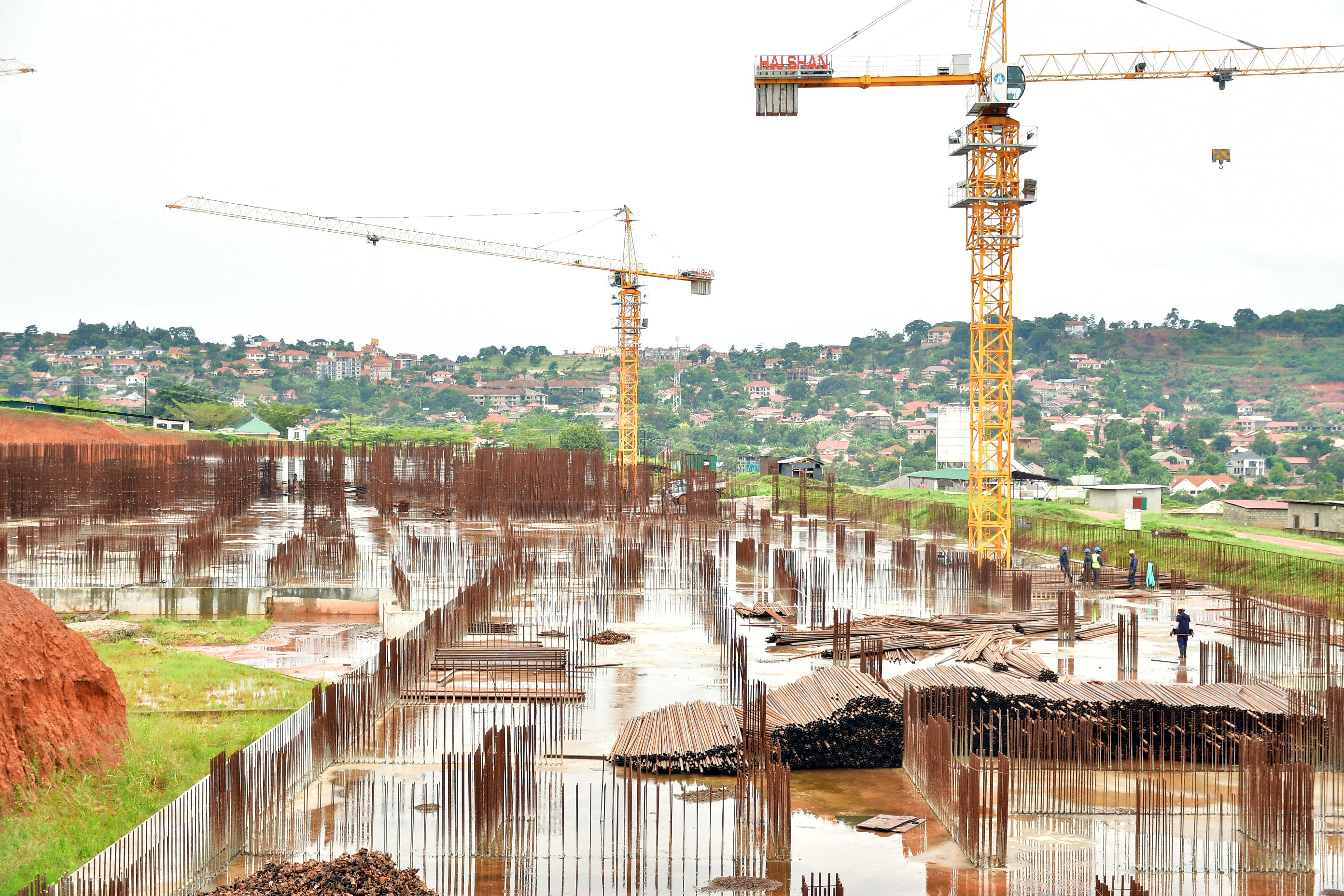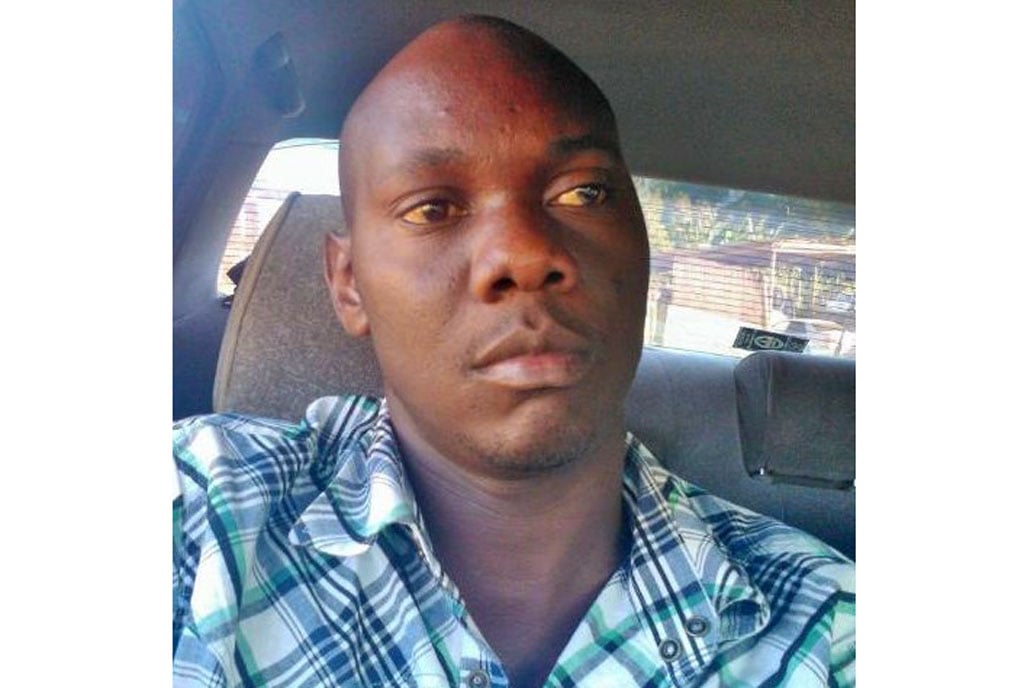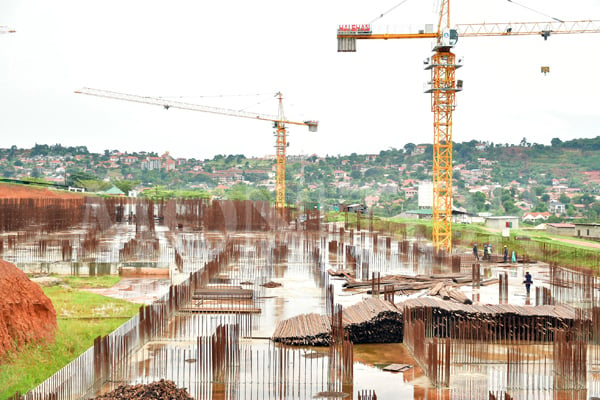Prime
How Lubowa project left taxpayers Shs359b poorer

The stalled Lubowa hospital project. The Members of the Parliament Committee on Finance and the line ministers were dismayed after they discovered that there was no contractor on their visit to the site on April 21. PHOTO/FILE.
What you need to know:
- At least five certificates worth $101m (Shs359b) were issued by the Health ministry, and all payments were exclusive of the statutory 18 percent VAT.
The developer of Lubowa Specialised Hospital was advanced 20 percent payment of the project’s total sum even before any work on the site commenced, an investigation by this publication has discovered.
It is not uncommon for a contract to mandate a party to make an advance payment for work that is yet to be done. After poring through requisite documents on the Lubowa project, we did not see any clause that directly speaks to such an arrangement. Attempts to get clarification from the Health and Finance ministries on the same were futile by press time.
READ:
The sweetener, which works to nearly $50m (Shs177b) out of $249m (Shs879b), was advanced back in 2018 well before Enrica Pinetti took over the project site at Lubowa on June 10, 2019.
Sunday Monitor can reveal that at least five certificates worth $101m (Shs359b) were issued by the Ministry of Health (MoH) engineers Francis Wakabi and George Otim.
All payments were exclusive of the statutory 18 percent Value Added Tax (VAT). A sixth certificate worth $15m (Shs53b) is on standstill.
We have also established that the Government of Uganda (GoU) and Ms Pinetti’s Finasi firm entered a promissory note purchase agreement with Barclays Bank Uganda, African Export-Import Bank, Absa Bank, Southern African Trade and Development Bank on December 4, 2018.
A promissory note is a signed document containing a written promise to pay a stated sum to a specified person or the bearer at a specified date or on demand.
In the agreement, African Export-Import Bank committed $88.1m (Shs311b); East and Southern African Trade Bank $83.8m and Absa Limited $88.1m (Shs296b).
Documents we have seen show that Finasi and construction firm ROKO created a US dollar account (6005823569) in Barclays Bank on Plot 2 Hannington Road onto which the money was wired via swift.
The agreement stipulates that whenever the MoH engineer would issue a certificate, the banks would pay the money at the earliest convenience. The bankers reportedly set a stringent condition that the legal opinion of the Attorney General confirms that the award of the contract to Finasi had conformed with the public procurement legislation and regulation of the Republic of Uganda.
Mr Medard Lubega Ssegona, the Busiro East lawmaker, however, believes this was never the case since Ms Pinetti was handpicked by President Museveni.
Mr Ssegona, who is also a practicing lawyer, contends that the entire project is shrouded in mystery and illegalities.
He cites the dearth of a bidding process at the level of selecting Finasi to the payments that were wired to the company.
“You have to place a call for expression of interest and examine profiles. The involvement of that Italian (Ms Pinetti) and the presence of the President’s name raises more questions. How much is the investor coming with? Everything to her, including land, is free. This was a raw deal,” Mr Ssegona said.
A dozen certificates
According to the lending banks in the agreement, the GoU has to present the budget approval by Parliament before any of the promissory notes is honoured.
Sunday Monitor has established that the first certificate for a “milestone” was issued by Mr Wakabi—an engineer on the books of the MoH, on December 20, 2018. This followed the project works investment agreement that had been signed on May 27, 2015.
This certificate categorised the payments in three forms. These included an advance payment of $49m (Shs173b) being a 20 percent advance of the entire contract sum. Financing charges of $9.7m (Shs34b) and other certified works (so-called gross MCC value) worth $33m (Shs117b) were also certified for payment. This certificate issued before any physical works amounted to $86m (Shs304b).
On January 8, 2020, a second certificate was issued. Remarkably, it referred to works that had been completed on December 10, 2019. Consequently, payment of $12.4m (Shs44b) was authorised.
On February 10, 2020, citing works completed on September 9, 2019, Mr Otim issued the third certificate worth $2.1m (Shs7b). A fourth certificate with a value of $4m (Shs14b) was issued on June 9, 2021. The fifth certificate with a total value of $1.7m (Shs6b) was issued on October 17, 2020. By this time, Finasi had received $101m (Shs359b).
DON'T MISS: Who’s that girl? Peeling mask on Enrica Pinetti
Sunday Monitor has not independently verified whether all these certificates were cashed. But the agreement, a copy of which we have seen, stipulates that whenever a certificate is issued, payments soon follow. We have also yet to establish whether a sixth certificate with a total value of $15m (Shs53b) dated June 23, 2021 was issued.
Out attempts to get in touch with Mr Otim were unsuccessful after being referred to him by MoH spokesperson, Mr Emmanuel Ainebyoona.
Promissory notes
On February 12, 2019, then junior Finance minister (Planning and Economic Development in-charge of Planning), Mr David Bahati, tabled a proposal before Parliament for the GoU to issue promissory notes.
By March 2019, red flags were starting to shoot up. The parliamentary Committee on National Economy—in a report—observed that necessary parliamentary approvals had been flouted.
It nevertheless went ahead and recommended that the House approves the proposal by the GoU to issue promissory notes.
The GoU went on to issue 26 promissory notes between April 1, 2019 and January 12, 2021. Sunday Monitor understands that their maturity spans up to 2027 with a three-month interval.
In it all, the total value of the notes issued was of a purchase value worth $259,652,614 (Shs917b). This, however, varied to $366,711,368 (Shs1.2 trillion) face value after interest.
These figures shot up to $10m (Shs35b), more than what the ‘investor’ had quoted in the project performance budget of June 30, 2021.
Mr Keith Muhakanizi, then Secretary to the Treasury said in March 2019, that the additional $129.81m represents the ‘Time Value of Money’ or interest cost of payment that the GoU has to incur as a result of repaying the consortium of Finasi-ROKO Construction over a six-year stretch. The $129.71m (Shs458b) is supposed to represent an effective interest of 6.49 percent.
Mr Muhakanizi said then that the GoU will only issue promissory notes for project activities and works that have been completed and certified by the GoU owner’s engineer.
He added that it was only giving assurances (a firm promise, although irrevocable promissory notes), noting that what is due to FINASI-ROKO Construction will be paid at a future date.
Land dispute?
In another twist, Sunday Monitor also understands that there is a silent war between a group of people claiming ownership of the Lubowa land on the one hand and the GoU on the other.
Originally, the huge Lubowa Hill block 269 was a private mailo land. On the earlier title, it is located in Wakiso; yet now the government owns a freehold title of the same block 269, located in Kampala. It is worth noting that Lubowa is located within Wakiso District.
In 2019, Mr Muhakanizi said the project land was legally acquired by the GoU and given to the Joint Clinical Research Centre (JCRC), a portion of which has been transferred to the MoH.
What Some MPs say
Mr Gerald Nangoli, the Elgon County MP, and also member of the Finance Committee, said: “When you look at the way the business of Lubowa hospital was handled, it leaves a lot to be desired by ordinary Ugandans. When you look at all these processes [in this deal], none of them was adhered to. There was no procurement, there was no bidding, there was no advertisement in the papers calling for bidders to apply. It was a one man’s show. Even if it was a one man’s decision, a background check on the investor should have been carried out to ascertain whether the person we are giving the taxpayers money is worthy dealing with.
“As Finance Committee, we have exhaustively discussed about it and we have ordered a value-for-money audit by the office of the Auditor General. We want to ascertain the business done on site, is it worth the money?
Mr Muwanga Kivumbi, the Butambala Country MP and shadow Finance minister, said: “Quite often when people who masquerade as investors charm up and excite the President, all brakes are off [and] he goes into overdrive and at times he even pushes aside the existing legal framework for those investments and we end up where we are.
Push for more money yet no work done, what does it reflect on this government? This reflects the desperation of a regime that has failed to deliver and the overall fear of technocrats speaking truth to power. People are where they are not for standing up for what is right but for bowing to what the Executive wants. It is a broader governance issue that is getting us where we are. I don’t question the competence of our technocrats at all.”
Background
Budgetary allocations
● Feasibility study—$1.6m
● Hospital Super structure—$52,017,364.50
● Legal consultancy—$2.7m
● Arrangement fees—$6.4m (among others)
● Engineering—$599.760
● Soil Investigations & Preliminary Fencing—$924,630
● Environment Study and NEMA Licence—$249,900
● Medical Planning/Space Programme—$874,650
● Preliminary Design—$999,600
● Schematic Design—$1,774,290
● Construction Licence from Makindye Ssabagabo municipality—$124,950
● Buildings - Detailed Design—$1,499,400
● Landscape & Infrastructures (Detailed Design)—$1,499,400
● Project Management—$4,301,000
● Work Supervision/Health & ● Safety—$6,084,860
● Auxiliary Buildings (Staff Hostels and Training School)— $2,272,500.
● Hotel with Multipurpose Hall—$7,352,500
● Minor Buildings—$1,450,000
● Civil Infrastructures, Utilities ● Networks and External Areas—$8,150,000
● Final Test & Commissioning and Handing Over—$2,050,000
● Medical equipment—$74,416,000
● Medical Equipment/Furniture/FFE
● Shipment & On-Site Delivery—$9,000,000
● Medical Equipment/Furniture/FFE
● Installation—$13,900,000
● Medical Equipment Testing & commissioning—$1,400,000
● Training for Equipment—$1,400,000
● Medicine and Consumable for the first year—$14,500,000
● Defect Liability Period—$1,249,500
● Reporting—$1,234,506
READ MORE





